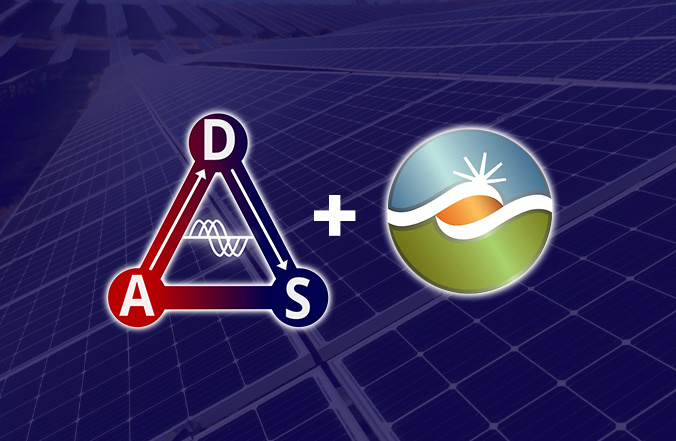If you look around you, chances are you’ll find some device or appliance that—through a long series of breakers, transformers, inverters, and tens of miles of transmission lines—is running on electricity generated from a power plant; you’re likely reading this on one of those devices right now. Power generation is many things, from a logistical puzzle to a technological marvel, but one thing that it is not, is free.
In California, wholesale power generation is a competitive business—and business has boomed since 1992, when changes in policy allowed competition in privatized power generation. In 1998, the California Independent Systems Operator (CAISO) was created as a non-profit regulator of the wholesale power generation market. CAISO both regulates the transmission, generation and distribution of power, but also the markets in which the generation and reselling of power is transacted.
Due to nature of the bidding process, power plant operators are required to provide generated power to the grid at a certain setpoint. This setpoint, provided every five minutes from CAISO, is based on the lowest-cost bid made by the operator. This setpoint determines the Dispatch Operating Target (DOT), measured in Megawatts, that the power plant must provide.
An Interconnected Network
With the DOT being updated every five minutes, and CAISO managing over 1500 power plants—and serving over 32 million customers—the energy market and subsequent dispatches have, for the most part, become automated. This Automated Dispatch System (ADS) is the primary way CAISO manages and balances power generation throughout its territory.
Once a bid has been awarded, a dispatch command containing the DOT (as well as other commands, such as the ‘hourly supplemental energy’ (SUPP)) is sent on the associated interval over the internet through a secure, encrypted channel. Thanks to the internet, CAISO can simultaneously send very specific MW setpoint values to thousands of power plant operators based on a dynamic wholesale market.
When a dispatch command has been received, the operator can view the data using CAISO’s web interface, where information for the current and projected dispatch instructions can be easily viewed. At this point, the operator has around two minutes to make the necessary adjustments so that the power plant is providing the requested Megawatt target.
How does Nor-Cal fit in?
If the automation of CAISO’s ADS was limited to broadcasting instructions, then every power plant would require an employee whose sole job is to change site output every five minutes. This means that, for sites that can provide power overnight, there would need to be an employee present 24/7 to make these adjustments—and this employee would need to be ready to make small adjustments to the site output every five minutes.
However, thanks to the magic of SCADA, brokering communication between the automated Power Plant Controller and CAISO is entirely possible. Nor-Cal provides such a broker, called the Nor-Cal Controls ADS Adapter. As its name implies, it adapts the commands sent by CAISO and turns them into signals that can be read by the Power Plant Controller, providing a layer of security in-between.
The ADS Adapter allows the operator to free up resources that would otherwise be dedicated to following setpoints, by simply taking the CAISO instructions and passing them along to be utilized by the SCADA Power Plant Controller.
More than just a messenger
The Nor-Cal Controls ADS Adapter is primarily used to simply forward instructions sent by CAISO to the PPC. The instructions that are forwarded are configured by an automation engineer using the ADS Adapter’s GUI, where they build the ‘Points List’—a template of instructions the operator would like to see. For example, if the operator wants to see the DOT, SUPP, and AGC Flag (Automatic Generation Control Flag) the points list can be set to forward these specific values.
Additionally, the ADS Adapter goes a step further and can provide additional information, from simple diagnostic information to advanced DOT functions. For example, access to CAISO dispatch instructions expires after a set amount of time and must be renewed. This adds extra security, but this frequent renewal date can be easily missed—especially now that dispatch instructions are fully automated. To mitigate this, the ADS Adapter automatically provides the number of days until the scheduled renewal, which can then be displayed in the operator Human Machine Interface (HMI) or even trigger notifications.
The ADS Adapter also performs advanced functions such as DOT Ramping. CAISO expects that the operator ramps between the previous operating target and the current operating target. For example, if the current command dictates the solar site provides 50MW at 12:00, but it is then updated to 62MW at 12:05, it would be against CAISO guidelines for the value to jump from 50MW to 62MW at 12:05 on the dot—imagine the problems if every generator on the grid suddenly changed their output every five minutes! Instead, a CAISO-compliant operator would want to ramp up the output 0.04MW every second to reach 62MW at 12:05.
The built-in DOT Ramping function of the ADS Adapter can automatically calculate gradient between the start and end targets that will ramp the DOT value it provides to the PPC accordingly. This has been tested and proven to follow CAISO regulatory guidelines and alleviates strain on both the grid and operators.
A commitment to customization
Like our other services, the Nor-Cal Controls ADS Adapter can be customized according to our customer’s needs. Right out of the box, it is capable of servicing multiple sites and can be easily configured to serve a tailored list of instructions. It also utilizes Windows’ built-in security features to secure its connection to CAISO and provide a layer between the ADS network and the PPC.
However, if additional functionality is requested, we at Nor-Cal are always happy to provide. Whether this be a special flag that triggers various instructions, or a specific protocol with which to serve instructions, the ADS Adapter can be customized to fit the operator’s needs.
In the end, an ADS instruction broker is the final piece to the Automated Dispatching puzzle and helps complete the end-to-end automation that keeps the grid running—and competitive. And with its easy-to-use graphical interface for configuration, real-time dispatch monitor, and our willingness to customize the service to fit the customer’s needs, it’s clear that Nor-Cal and its ADS Adapter is a key player in world of dispatch automation.
Contact Nor-Cal Controls today to learn more about how our ADS Adapter can revolutionize your energy management. Our team of experts is dedicated to providing customized solutions tailored to your specific needs.





